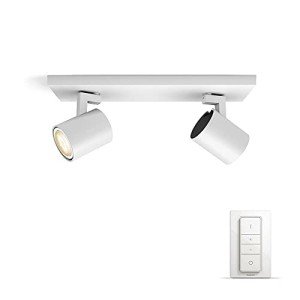How To Outsmart Your Boss With Interior Lighting UK
Interior Lighting in the UK: A Comprehensive Guide
Interior lighting plays an essential function in developing an environment, enhancing functionality, and expressing individual design within homes and services. In the UK, where the weather can be unpredictable, efficient lighting is not only about looks however also about making areas feel warm, inviting, and useful. Buy Farmhouse Lighting UK into different elements of interior lighting, including types, patterns, pointers, and frequently asked questions.
Comprehending the Importance of Interior Lighting
Lighting is typically thought about the backbone of interior decoration. It influences state of mind, functionality, and the viewed size of areas. The ideal lighting can:
- Enhance the architectural functions of a room.
- Highlight artwork and decor.
- Enhance safety and security.
- Influence efficiency in work spaces.
- Develop a comfortable ambiance for relaxation.
Kinds Of Interior Lighting
Efficient lighting style usually incorporates 3 primary kinds of lighting: ambient, job, and accent.
1. Ambient Lighting
This is the primary source of light in a room, providing general lighting. Typical sources consist of:
- Ceiling-mounted fixtures
- Chandeliers
- Recessed lighting
- Soft wall sconces
Ambient lighting develops a foundation from which other lighting types can build on.
2. Task Lighting
Job lighting concentrates on particular locations to facilitate activities such as reading, cooking, or working. This kind of lighting assists to lower eye pressure and can dramatically affect performance. Typical sources include:
- Desk lamps
- Under-cabinet lights in kitchens
- Reading lamps beside beds
- Mounted lights intended at work surface areas
3. Accent Lighting
Accent lighting adds drama and highlights specific things or areas, such as artwork or architectural features. This kind of lighting can create visual interest and depth in an area. Sources consist of:
- Picture lights
- Decorative lamps
- Uplighters
- LED strip lights along shelves
Utilizing a mix of these lighting types can lead to a healthy and multifunctional space.
Popular Lighting Trends in the UK
The interior lighting landscape in the UK continues to progress, affected by design patterns, innovation, and consumer preferences. Here are some popular patterns to watch:
Smart Lighting: The arrival of smart technology has changed how people handle lighting in their homes. Smart bulbs and systems like Philips Hue allow users to control brightness and color temperature via their smartphones.
Minimalist Designs: Sleek, basic styles that blend seamlessly with interiors are controling the marketplace. Pendant lights with fragile frames, LED strips, and geometric shapes are particularly fashionable.
Industrial Lighting: This pattern showcases raw, bare materials. Metal fixtures and Edison bulbs offer a vintage touch that is both trendy and practical.
Eco-Friendly Options: With increasing awareness of sustainability, many customers are turning to energy-efficient LED options and fixtures made from sustainable products.
Tips for Effective Interior Lighting Design
Designing a reliable lighting plan needs thoughtful consideration of numerous elements. Here are some suggestions:
Consider the Purpose of Each Room: Every area has a different function. Consider what activities will take location and what type of lighting will support those activities.
Layer Lighting: Employ multiple types of lighting within a room to create depth and flexibility. Integrate ambient, job, and accent lighting to enhance both visual appeals and functionality.
Use Dimmers: Dimmers enable control over brightness levels, enabling users to adjust lighting according to mood and time of day.
Include Natural Light: Make the many of natural lights like windows. Usage light, reflective colors for walls and furnishings to maximize brightness.
Think Of Color Temperature: Different color temperature levels (measured in Kelvins) create different environments. Warmer temperatures (around 2700K-3000K) are cozy, while cooler temperature levels (4000K+) provide a more scientific or energetic feel.
Interior Lighting Mistakes to Avoid
To create a well-lit area, it's necessary to avoid common lighting risks. Here are some mistakes to look for:
Underestimating Wattage: Insufficient wattage can lead to dim, unwelcoming areas.
Overlooking Scale: Fixtures that are too little for a room can watch out of location, while extra-large fixtures can overwhelm an area.
Over-reliance on Ceiling Lights: Relying entirely on overhead lighting can produce uninviting shadows; balance with additional lighting types.
Poor Placement: Misplaced lights can produce areas that are too brilliant or too dark. Plan positionings thoughtfully.
Frequently asked question Section
1. What is the distinction between warm white and cool white light?
Warm white light (2700K to 3000K) produces a comfortable, inviting atmosphere, ideal for living spaces and bed rooms, while cool white light (4000K to 5000K) is more fit for work spaces as it improves concentration and clarity.
2. How can I make the most of natural light in my home?
To maximize natural light, usage light-colored walls, strategically place mirrors to show light, and select sheer window coverings that permit sunlight to go through.
3. How do I choose the right light fixtures?
Think about the size of your area, the design of your decor, and the function of the location. Make sure the scale of fixtures matches the room and matches the overall aesthetic.
4. Are LED lights much better than traditional bulbs?
Yes, LED lights are more energy-efficient, have a longer lifespan, and can offer a variety of color temperature levels, making them a more sustainable lighting option.
5. What should I do if particular locations of my room remain too dark?
Consider including extra job or accent lighting to lighten up those locations. Floor lamps, wall sconces, and even strategically placed table lamps can help minimize dark areas.
Interior lighting is an important element of home and organization style throughout the UK. Comprehending the various types, current trends, and finest practices can assist property owners in creating spaces that are not just stylish however likewise practical. With thoughtful factor to consider and preparation, efficient lighting can change any environment, enhancing both atmosphere and usability for several years to come.
